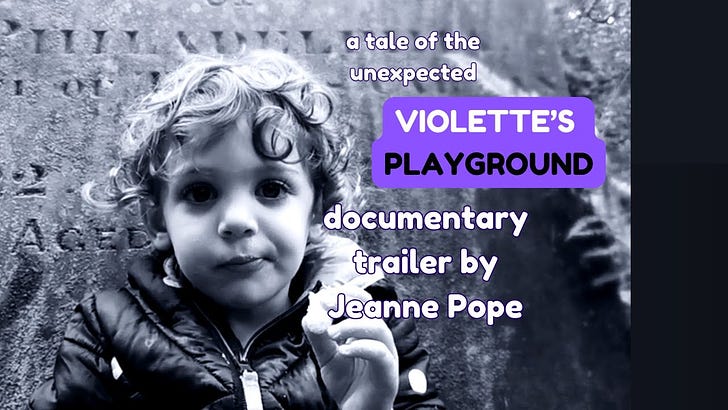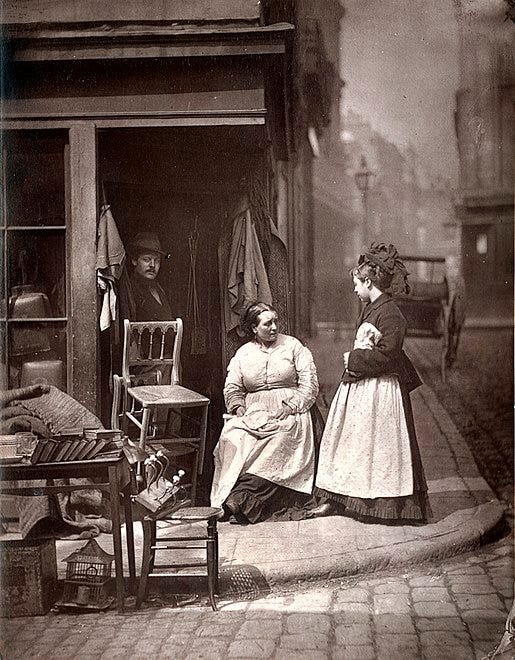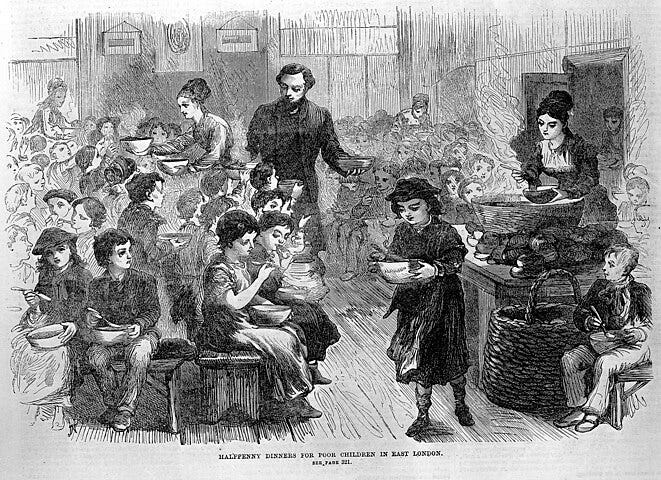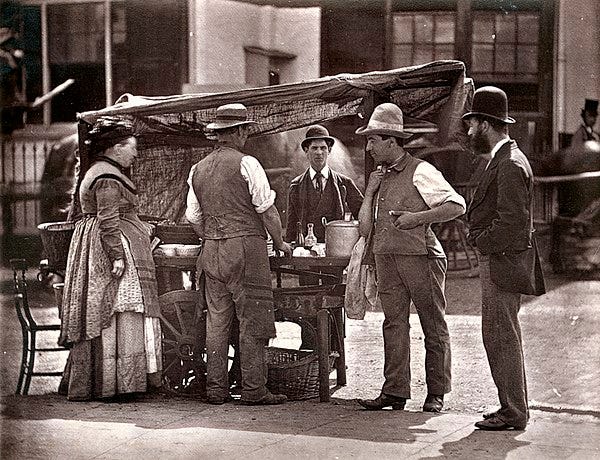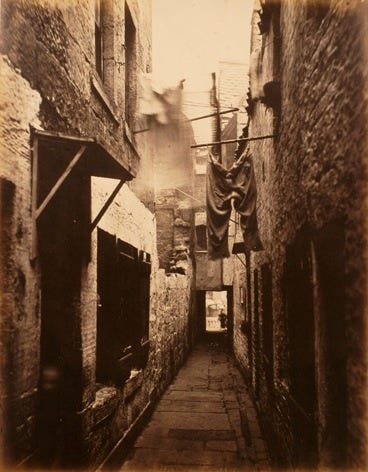Finally!
The back story - The date was 1993
It was a cold winter day, many years ago when I met my friend Philadelphia Carmen, nee Jones. Not a typically eventual sort of a day, however, I do remember the call of the wood pigeons, the slight breeze in the trees and then, before the cemetery has been protected and care for by the Friends of Woodbury Park Cemetery, there was an interesting wilderness of tangled weed, long grass and fallen trees, which would hide the sometimes traveller or later night reveller who found themselves quite by accident, asleep in the grass, and yes, this is true as I met them a few times!
It was that sort of a foggy misty morning, the cemetery ghostlike and a little forlorn, giving me a visual back-drop as my head was full of a story I was creating. I ambled, in thought, not wanting to go to work in a small cafe on Camden Road, so I lingered as long as I could, idling between the tombs.
I had my story, yet needed a name for my subject, a wild woman, not in the sense of abandon, but wild, aloof, different, and independent; not tame. In this mode of thought, I felt drawn to one side, along the small path to a particular headstone I had not looked at before. I can not explain what happened, except I felt an odd energy, or should I say connection, a compelling need to touch the cold stone.
Philadelphia Carman, married to Thomas Carman, died, 1851
I imagined her for some reason to be a small woman, wiry, a traveller. If I were to cast Bathsheba in Thomas Hardy’s Far from the Madding Crowd this is how she would be, and I would change the name to Philadelphia.
Philadelphia became my friend. My visits to her, frequent, and always, that energy, connection, and a warmth as I turn the corner past the horse’s drinking fountain and walk out along the flat.
Years later,
Years later, many moons passed, countries lived in, lessons learnt, my young daughter now a mother to Violette, I have come back to Tunbridge Wells to live for a while. My old haunt is now cleared of tangles and is wide-open, with flowers scattered for different seasons, and the graves restored by seniors, the Friends of Woodbury Park.
I come here regularly, as I have done over these 30 years, leaving bunches of flowers, and garlands; and yes, I wrote her story, the fictional one, now, this year, I shall complete the documentary.
It is time.
I don't know where it will begin, or how it will end, however, time has given me the chance to really get to know you. How you lived, where you lived, how you died and who was with you when you died.
You were born Philadelphia Jones on the 13th of July, in Lewes, 1803
during the second wave of the Napoleonic wars. That must have affected your life as Sussex folk were waiting for the invasion that never happened. Any war is tumultuous. You were a child of dissenters - Quakers - maybe your name came from the city of Philadelphia, created by Penn in 1682, himself a Quaker. You were baptised in the Owe Chapel founded by Selina Hastings, Countless of Huntingdon, founder of the evangelical branch of Methodism in England. The rest is conjecture, lost in time…
We only know life was tough for the poor and working class. Muddy streets, cold and damp homes, smoky rooms, feeble candle light, consumption, rickets, and the constant fear of the law, and church. To be an outsider was difficult. Hannah Badger writes in her thesis - The Portrayal of Dissent and the Anglican Church in Victorian Literature:
‘Although the Victorian era brought a new religious standard, Dickens’s and Brontë’s fear of Gaskell’s dissent novel betrays the tight grip which traditionalism still had on Victorian society. The examination of North and South, Hard Times, and Jane Eyre will show how the larger conversation about the cultural shift away from Anglicanism was manifesting itself on the literary page.’
The next record I found reveals you came to Tunbridge Wells and married Thomas Carmen. When? I do not know. What you did before I can only guess at, however, talking to a genealogist who is an expert in Victoria tells me, the life of the working class was especially dull and a constant hustle for money, for time, for family, for freedom, for education. Philadelphia was no different. However, I feel she was, and will try to prove it.
I do know,
you worked as a jobbing cook, meaning, you were an independent worker, going from home to home cooking, a freelancer. This shows more about you than anything else because it means that you needed freedom more than working for someone full time. You would have been a hustler, now days called a sole-trader, and would have had to have been excellent at your job, and better than the cooks who worked in the bigger houses. If not, no job so no money!
Or maybe your job was to fill in with an expertise where other cooks fell short. The kitchen was run by the head cook, then there were other maids under her, and the scullery maid. In more modest homes there would be local workers coming in to fill the jobs. A jobbing cook offered you the chance to work your hours with your own agenda.
Three weeks before your death, in the 1851 census on 31st March, you are with your husband, Thomas Carmen, and two friends, Charlotte and George Humphrey. They both who would later end up in the workhouse and buried in the paper's graves. (I found information about George and Charlotte them quite by accident by buying an second hand booklet about the Tunbridge Wells Pauper graves. These things often happen when we begin a search - serendipity.)
It was very damp that day the Census workers came
The fire in your front room, at 53 Agnes Cottages which is now 15 Camden Road - filled with smoke, and your feeble lungs pattered with pulmonary tuberculosis left you short of breath.
The same night, just up the road, Thomas Carman, your husband, was also recorded as living.
Now, this is strange. Two places, in one night in the Census.
You were dying, so close to the end, why was your husband there in the house, then not there, and up the road?
Was he on duty? This is where he worked? He worked for a Mrs Francis Wood in a big house, now the Tunbridge Wells Police station, a brisk ten-minute walk away. So he came home and was counted in the Census, then he left again and was counted at Mary Wood’s home. Why did he have to leave?
I have always felt something is wrong.
Were you wronged Philadelphia?
Did your hustband have another woman, love interest, or did duty bind him?
When you died on the 22nd April, he not come either, even though he only worked up the road. Why does Charlotte, your friend, sign your death certificate. ( She signed it with an X meaning she was illiterate. )
And why do you have a double-sided tombstone?
Was Thomas Carman's name added as an afterthought - which has been suggested.
You are buried next to Henry Austin, brother to Jane Austin the writer, in a more prosperous plot. You were, after all, a servant. How could you have afforded this in your life. (Victorians often saved all their lives for a decent burial.)
These, dear Philadelphia are some of the questions I muse over. Today.
But then, in 1993 when I stood in front of you thinking of Far From The Maddening Crowd, I had no idea the journey I would be going on with you, that I would care for you like family - My family.
The twist I can not tell here, that will give it all away; however, here are my notes on the creative treatment of this documentary.
Creative element
Violette’s Playground begins as a poetic documentary, with a loose visual narrative. I tell my story of growing up next to the cemetery, and we follow Violette, my grandchild in a non-linear way for the first part of the story. The mood is slow and rhythmic. A preamble into this breathtakingly serene and isolated place. As time and seasons pass, we see Violette change while we return to the same monuments over again, in a loop, especially Philadelphia's tombstone which begins to overshadow the other monuments
Point of view
In the opening, it is mainly filmed from Violette’s P.O.V. There will be long and full shots, close-ups and extreme close-ups as Violette plays around the different gravestones. I want us to get into her world, see through her eyes.
Midpoint, The P.O.V changes. I use voice-over to tell the story of the cemetery. Interspersed are archival photos and found footage. Towards the end, I talk about the attraction to Philadelphia, which opens up her story to be told with voiceover. (I will use an actress’s voice for Philadelphia.). I want to stress her importance as she represents so many unknown women who kept England alive through their relentless hard work. I ask Philadelphia what she is trying to tell me.
Denouement
I come back to Violette as she plays aroung Philadelphia’s gravestone. I finish with our otherworldly connection. I will use all the archival documentation I have:
The death certificate and census and town plan.
I will merge the plans of the street in 1851, and the site today.The film ends as it begins, with Violette wandering off alone along the path she knows so well, with the same background sounds – the faraway light planes, her 'glider planes' - while everything appears the same. But it is not the same. It will never be the same. For we now know something that we did not know before.
I finish the documentary by sharing with Philadelphia that I finally believe I know what it is she has been trying to tell me, and I understand, finally.
For the sound
The soundscape is found sound from the graveyard: wood pigeons and larks, overhead planes, far-off voices and Violette's childlike murmuring. I will consider an old English Kentish song for the credits sung without instrumentation by Davy Dodds. I have yet to ask him the permission. I have found he is most gracious with people using his work.
The Magpie
Thank you so much. Have a wonderful March. March, the time of Spring and new beginnings. And for supporting my work, as always.
All my love,
Jeanne
Jeanne
Thanks for reading Soaps & Sagas - Travelogue! Please share - THANK YOU
Here is my Website - Scatterflix Documentaries for a film workshops, courses and more

